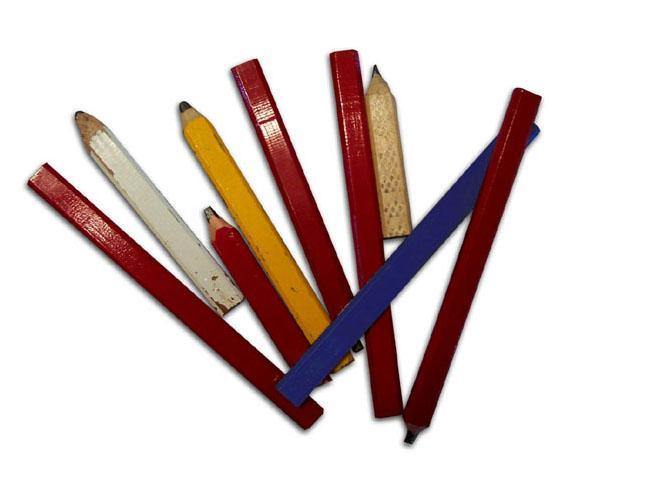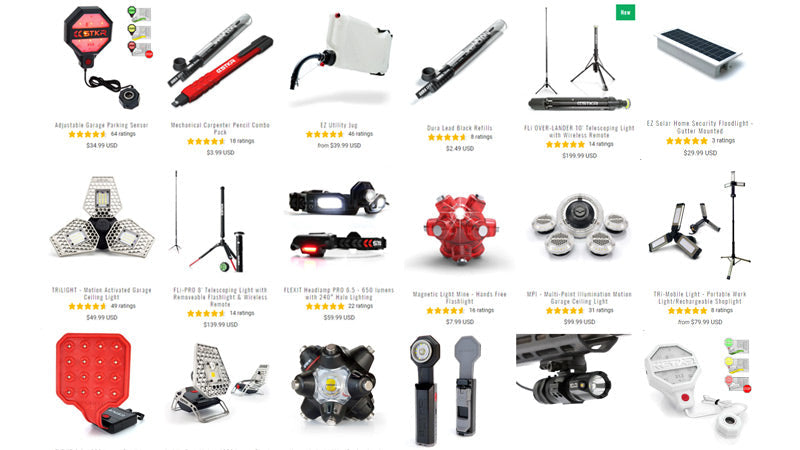
Why Is a Carpenter Pencil Flat? and Sharpening vs Mechanical
Share
A carpenter's job involves cutting, shaping, and installing materials in the construction of buildings and other structures. To ensure that everything is cut to its precise length and shape, carpenters do a lot of measuring, calculating, and marking. Using a carpenter pencil, they mark wood and other materials so they would know where to cut according to the proper measurements.
A carpenter pencil has flat sides with rectangular or elliptical cross-section for three main reasons: to keep it from rolling off the work surface, to allow for a wider and thicker lead, and to make it easier to grip, especially with work gloves.
Read on to know more about carpenter pencils and why they are an indispensable item in a carpenter's toolbox. You will also know what sets them apart from your ordinary drawing pencil, as well as how to sharpen them.

What Is a Carpenter Pencil?
A carpenter pencil is a pencil that is specially made for use in a construction environment. It is used to draw thick lines or markings on wood and other building materials after you measure them. These marks indicate the points where you would have to cut the material according to its proper length and dimensions or to drill holes exactly where they should be.
Unlike an ordinary or standard pencil that features a round or hexagonal cross-section, a carpenter's pencil has a rectangular or elliptical cross-section with long flat sides.

Why Do You Need a Carpenter Pencil?
With a carpenter’s pencil, you can mark points on your wood or other material right after you have made measurements. Marking is the only way you can be sure to cut your building components with precision or to drill holes on the proper spot. Accuracy and precision in your measurements are crucial in making sure that all the construction pieces fit together perfectly or installed evenly.
Keep in mind that when it comes to carpentry and construction, it only takes a few millimeters to end up with a wobbly table, a lopsided cabinet, a drawer that doesn't close, or an uneven door frame. A tape measure and a carpenter’s pencil always go hand in hand to make sure you set yourself up for a great cut.

Benefits of a Carpenter Pencil’s Shape
There are several practical reasons why a carpenter pencil has an elliptical or rectangular shape with long flat sides.
A flat shape keeps the pencil from rolling off your work surface.
Worksites are rarely perfect environments. In fact, you are often working on uneven, or non-level surfaces. If you are marking wood and other materials on your work table or on whatever surface you are working on, you would want to keep your pencil within easy reach. You would need to mark your material right after taking each measurement with your tape measure.
The problem with standard pencils is that they tend to roll off the edge of your table or work station. Bending down to pick them up from the floor every time they fall would be inconvenient. More so if you are working on an elevated surface, like a roof.
What's more, picking up your pencil from the floor too often could distract you, which is not a good thing if you are holding or operating sharp, heavy, and potentially dangerous tools and equipment.
So to prevent this problem, a carpenter pencil is designed in such a way that it lies flat on the table. It does not roll even when you place it on a steeply sloping roof.
A flat shape is easier to grip than a round one.
A carpenter pencil is easier to grip than a standard pencil because its elliptical and flat shape allows for a larger surface area.
While there are differences in the shapes and sizes of carpenter pencils, the most common size is about 15 millimeters (0.59 inch) wide, 6.35 millimeters (0.25 inch) tall and around 177.8 millimeters (7 inches) long. Meanwhile, a standard round pencil is about 6.35 millimeters (0.25 inch) in diameter and usually about 190.50 millimeters (7.5 inches) long.
A non-round core accommodates a wider, thicker, and stronger lead.
The carpenter pencil's non-round core leaves enough room for a wider and thicker lead. This lead is strong enough to draw legible marks on rough and uneven surfaces. The thinner round lead used in standard pencils are not as tough and couldn't withstand being used on rough materials, such as OSB or other construction materials. Aside from breaking too easily, standard lead is barely visible on such surfaces.
Because of this thick core, the pencil is also strong enough to survive in a construction site, where it is stored along with heavy tools in a bag or toolbox.
A non-round lead core allows you to draw thick or thin lines.
The carpenter pencil’s non-round core lets you draw either thick or thin lines. All you need is to rotate the pencil at a proper angle.
You will need to draw thin lines if you need to make markings that are highly precise or are easy to erase. Meanwhile, you need thick markings for rough surfaces, like concrete, unpolished wood, or stone. These lines will be clear and easy to follow with your saw or drill.

Sharpening a Carpenter Pencil
Unlike a standard pencil, a carpenter pencil does not fit in a traditional round-shaped pencil sharpener. As such, carpenter pencils are usually sharpened by hand, using a utility knife, cutter, or chisel to slice off the wood surrounding the lead at the tip.
A properly sharpened carpenter pencil exposes around a quarter-inch of lead. You can also adjust the sharpness or thickness of your pencil's lead by using sandpaper.

There’s such a thing as a special sharpener for carpenter pencils, and you can spin your pencil the way you do an ordinary one. However, some of them cannot effectively cut the wood of your pencil or its graphite.
Mechanical Carpenter Pencil
Those who are not too keen about using a chisel or utility knife to manually sharpen a carpenter pencil can just opt for a mechanical carpenter pencil. There are a few reasons why using a mechanical carpenter pencil is better than using a wooden one.
A mechanical carpenter pencil was created to preserve the purpose of a carpenter pencil's flat and rectangular shape and to maintain the integrity of the lead. This is because the different traditional methods of sharpening a carpenter pencil can turn the lead into a fragile point, and this could cause it to break or wear down quickly, especially when used on rough construction materials.

Using a knife to sharpen your pencil could also fracture the lead, and this could cause an unpredictable tip that affects its precision.
Additionally, wooden pencils flex during their life cycles, and this fractures all their lead. This is the reason why huge chunks of lead can get easily pulled out in the process of sharpening a pencil. Moreover, it has become a common habit for users to throw pencils out when they're down to half or a third of their original length because it gets hard to hold them.
In other words, a mechanical pencil stays the same length throughout, so you don't have to throw it away.

Final Word: Why It Makes Sense That a Carpenter Pencil Is Flat
A carpenter pencil is designed with a purpose, and it has practicality and convenience in mind. If you are planning to do some carpentry work at home and are in the process of acquiring your tools and equipment, this special pencil should be right at the top of your list along with a tape measure. It is something you would find useful regardless of the type of project you will be working on and regardless of the materials.


